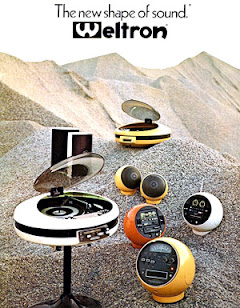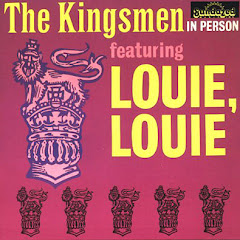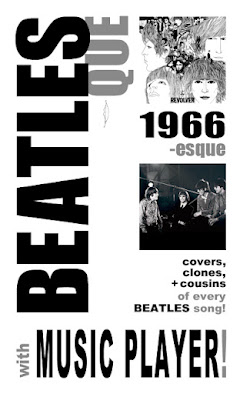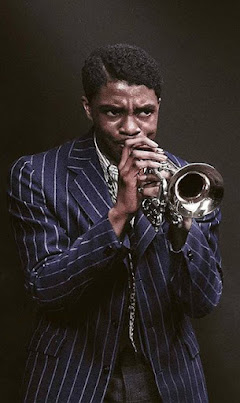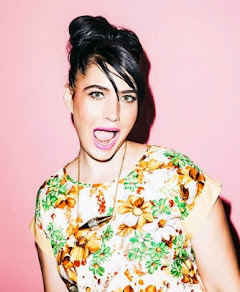remained strong through each decade!
(#3 of 6 parts)
world-spanning
Music Player!
brings you the actual, all-inclusive
history of Rock'n'Soul music,
with essay overviews and Music Players.
▶ History Checklist
Today, the story of how '50s Rock'n'Roll was revived in 1980s music and film!!
Hear an exhaustive music player, with worldwide artists maintaining the '50s styles from 1980 through 1989!
by Tym Stevens
Hear the unlimited Playlist here.)
Learn the whole history, with Music Players!
▶ Revolution 1950s: The Big Damn Bang of Rock'n'Roll!
▶ 1950s Rock, A: The '60s Disciples
▶ 1950s Rock, B: The '70s Disciples
▶ 1950s Rock, D: The '90s Disciples
▶ 1950s Rock, E: The 2000s disciples
▶ 1950s Rock, E: The 2010s disciples
C h a p t e r
l i n k s :
𝟭 • 1980s: NEW WAVES
𝟭a • • Punk
𝟭b • • Black is back
𝟭c • • She's Gotta Have It
𝟭d • • Teds
𝟭e • • Psychobilly
𝟭f • • Perennials
𝟭g • • Offspring
𝟭h • • Boogie
𝟭i • • Traditionalists
𝟭j • • Next Wave
𝟭k • • Roots
𝟭l • • Cowpunk
𝟭m • • Iconoclasts
𝟭n • • The Originals
𝟭o • • Screen
1980s: NEW WAVES
The original Rock'n'Roll styles of the 1950s -Rockabilly, electric Blues, Honky Tonk, Mambo, Cajun, and Doo Wop- became perennials that never stopped. Even with all the radical mutations of musics that followed, hardcore tribes still kept the original root sounds alive in the '60s and the '70s.
In the '80s, this roots underground became more rampant, propelling a spectrum of artists, from the traditional to the radical.
Punk
1950s Rock'n'Roll continued to undercurrent Punk music in the spillover to the '80s. Its reckless rhythms and delinquent sneer (in leather jackets) rumbles all through The Ramones, Subway Sect, Lydia Lunch, Pearl Harbor And The Explosions, X, The Clash, The Fall, and Dead Kennedys.
Since Ska had originally morphed out of Jamaican love of R&B, naturally the Ska Revival bands like The (English) Beat, The Specials, and Madness took it back to the roots at times.
It spread laterally through acolytes like Social Distortion, Husker Du, Joan Jett, The Smiths, The Delmonas, and Jesus And Mary Chain. The style of '50s Rock and the energy of Punk would lead to Psychobilly.
"Black is back /
All in, we're gonna win"
FM radio formatting (and, initially, MTV) continued to resegregate people out of the music they helped create, with the robot mantra 'Rock=white, Dance=black'.
(Short truth: everybody creates everything.)
Despite this closed-loop ignorance, defiant artists still echoed the sonic heritage they had every right to, with '50s styles glimmering in songs by Donna Summer, Joan Armatrading, The Spinners, Gary U.S. Bonds, and The Neville Brothers, as well as Howard Huntsberry's note-perfect portrayal of Jackie Wilson in the film LA BAMBA (1987).
If 1970 had been all about cultural inclusion, a decade of enforced division by FM Radio formats had resifted everyone into separate niches. Thus The BusBoys arrived in 1980 into a music system and marketed audience more segregated than any time since 1954. They turned this challenge into a mission to subvert every stereotype from every angle, from their mock-servant persona to their gleeful tear through music styles. In "Johnny Soul'd Out" they channel Chuck Berry> to parody all imposed limitations.
Colbert Hamilton
At the same time, Dig Wayne and his Rockabilly band, Buzz And The Flyers, sparked New York but lit up the Ted crowds best in the UK. (Dig went on to front the hit new wave/soul band, JoBoxers.>) London's own Colbert Hamilton And The Hell-Razors trysted the cats and kitties with their first single in 1984. By then, Barrence Whitfield And The Savages were rippin' it up and havin' a ball tonight going full-throttle Little Richard on their first album.
Little Richard> himself would team up with Fishbone and Living Colour; and Mick Collins of The Gories transmitted John Lee Hooker.
She's Gotta Have It
Contrary to sexist narratives, women were a huge force in the original 1950s Rock'n'Roll. They continued on into all the various styles that evolved through the '60s and '70s in ever-exponential numbers, but were often thinned out from the herd of '50s revivalists.
But if someone is held out because of false limits, they will fight back by ignoring them.
In the '80s, rockin' women began reclaiming this aspect of their herstory. Heart and Girlshool had the boogie; The Cosmopolitans sassed from the Garage; Cyndi Lauper first perfected her Buddy Holly hiccup fronting Blue Angel; Chrissie Hynde and The Pretenders never forgot to keep it real; and rockafillies finally infiltrated the Teds movement, and bands like The Ace Cats and The Dead Beats, or flew solo like Rosie Flores and Beverly Stauber.
This turf stake would expand in the '90s, and become a continent in the 2000s.
Teds
The late '70s Teddy Boy Revival train kept a-rollin' with Shakin' Stevens, Crazy Cavan, Bonneville, Jimmie Lee Maslon, and -at last- with women like Ravenna And The Magnetix and Gina And The Rockin' Rebels.
Psychobilly
"The Cramps weren't thinking of this weird subgenre when we coined the term 'psychobilly' in 1976 to describe what we were doing. To us all the '50s rockabillies were psycho to begin with."
-Poison Ivy, of The Cramps
The Cramps may've sired Psychobilly sideways, but it quickly metastasized globally with Misfits, The Meteors (England), Guana Batz (England), and Batmobile (Netherlands).
By the mid-'80s a Psychobilly scene stomped at London's Klub Foot, with home acts like Restless, Frenzy, Styngrites, The Coffin Nails, and Demented Are Go. (Like the initial Teds revival, it started too male, which would gradually change.)
The blistering rush was paralleled by revivalists like Barrence Whitfield, The Milkshakes (with Billy Childish), and The Leroi Brothers; blues blasters The Paladins; and the Garage of The Delmonas (with Ludella Black) and The Gories.
Perennials
Neil Young; The HoneyDrippers
The second wave of rockers still relayed the torch with incendiary numbers by Neil Young, John Fogerty, The Rolling Stones, Bill Wyman's Willie And The Poor Boys, Charlie Watts with Rocket 88. And was run forward by third decade rockers like David Bowie, Bruce Springsteen, Sylvain Sylvain, Patti Smith, and The Honeydrippers (fronted by Robert Plant, featuring Jimmy Page).
And of course true-school Rock bopped in the solo endeavors of Messrs. Lennon, McCartney, Harrison, and Starr.
Offspring
By now '50s Rock was in the blood, carried on by Billy and Rocky Burnette, Rosanne Cash, Carlene Carter, and Hank Williams, Jr.
Boogie
The boogie was in 'em, and had to come out of Heart, ZZ Top, Spider, Steve Miller Band, Little Feat, and Badfinger.
Traditionalists
Marshall Crenshaw; Chris Isaak
Keeping the living traditions viable in new expressions were Rockpile (fronted by Dave Edmunds and Nick Lowe), The Blasters, Marshall Crenshaw, Ry Cooder, and Chris Isaak.
Next Wave
But some just wanted the original Rockabilly back as pure as they could distill it. In the early-'80s a legion of coiffed, tattooed, slapbass combos dizzied up the dancehalls. Following in the suede shoes of the Teds and Robert Gordon, they mirrored the zest and flair of the psychobillies but with a more deliberately classic sound.
Carl Perkins once wailed, "Go, cat, go!", and now catalyzed a movement: thus prowled The Blue Cats, The Rhythm Cats, The BopCats, The Polecats (UK), The Teencats (Norway), The Ace Cats (Germany), The Go-Katz, Levi And The Rockats, and The Catmen loud and proud.
Lee Rocker, Brian Setzer, Slim Jim Phantom
This of course unleashed the massive mainstream success, through MTV exposure, of Stray Cats, featuring Brian Setzer, Lee Rocker, and Slim Jim Phantom; their breakthrough may have arguably done more to revive '50s Rock for the mainstream and cement it as a tradition for the ages than any other act or movement.
Also rockin' the bop till the sock hops sagged dragged and dropped were Les Forbans (France), The Shakin' Pyramids (Scotland), The Sharks, The Rattlers, and The Dead Beats led by Suzy May.
Roots
Meanwhile the main force in '80s music was synth-driven, a gestalt expression of futurism.
Rock has always trysted in the cross-current between the earthy and the alien, the organic and the eerie. One movement insures a parry. But for all the sleek sheen and chrome dreams of the sythethic scene, others pined for rust and dirt and soul.
By the mid-'80s a Roots rebuttal kicked butts with revisals of Blues, Country, Mariachi, and Zydeco. The pulse of '50s Rock throbbed in the veins of The Fabulous Thunderbirds (with Jimmie Vaughan), Joe Ely, Lucinda Williams, Los Lobos, Marcia Ball, Rosie Flores, Dwight Yoakam, Katie Webster, Omar And The Howlers, Buckwheat Zydeco, and Lou Ann Barton.
Abstractly, Paul Simon connected the historical circuit from Township Jive to Doo Wop when he worked with Ladysmith Black Mambazo, as recognition of organic World musics flourished.
Cowpunk
Simultaneously, some artists shotgun-wed these roots forms to punk energy, in a trend loosely corralled as Cowpunk.
Bringing some throwdown to the hoedown were Tex(acala Jones) And The Horseheads, The Knitters (X in plain disguise), Lone Justice, The Textones with Carla Olson, Jason And The Scorchers, The Long Ryders, and the early k.d. lang.
Meanwhile, in the wake of Outlaw Country artists like Nelson and Jennings, a new breed of Country upstarts were rejecting the factory pop to re-embrace Hank Williams, Johnny Cash, and George Jones. Thus rose Neotraditionalists like Randy Travis, Dwight Yoakum, Roseanne Cash, Townes Van Zandt, Patti Loveless, Lyle Lovett (who brought in Soul and Jazz), and Steve Earle. Bluegrass caught new fire with Allison Krauss. The spirit of Gram Parsons lived in Emmylou Harris and The Desert Rose Band (with Chris Hillman). And k.d. lang worked with Owen Bradley, Patsy Cline's producer, to redefine herself as a Country torch singer.
These movements set the stage for Alt-Country in the early-'90s.
Iconoclasts
Jim Jarmusch and Tom Waits;
Nick Cave
And you know, some people are just crazy. You can't tell 'em nothin'. They're just gonna go right on.
Somewhere in the mania of Mink Deville, Alan Vega, David Byrne, The Gun Club, Tom Waits, The Birthday Party, Nick Cave And The Bad Seeds, 45 Grave, and the deranged Hasil Adkins, you can darkly parse the distorted shards of '50s Rock.
The Originals.
Little Richard's biography;
Eric Clapton, Carl Perkins, George Harrison,
Ringo Starr, Dave Edmunds
But you can't beat the real Real.
The original pioneers of Rock'n'Roll got a lot of respect due in the '70s and this reached a peak in the late-'80s.
The Million Dollar Quartet returned in 1985 for a new 30th anniversary album: Jerry Lee Lewis, Johnny Cash, Carl Perkins, with Roy Orbison subbing for Elvis. Jerry of course went and got a gun to hunt down a Rolling Stone scribe (because they had accused him of killing one of his wives).
Chuck Berry was celebrated royally by his peers and scion in the concert documentary HAIL! HAIL! ROCK 'N' ROLL (1987), with all-stars led by Keith Richards, including Julian Lennon, Etta James, Linda Ronstadt, and Robert Cray.
A bestselling biography brought the Fourth Coming of Little Richard, who became ubiquitous on chat shows and record cameos.
Roy Orbison's "In Dreams" haunted David Lynch's BLUE VELVET (1986). (The film's eerie evocation of a late-'50s/early-'60s-esque variant of the present day, with dream pop music, would be the template for 'Twin Peaks>.) It brought Roy back in a lavish relaunch album and special supported by famous acolytes, including U2, Jeff Lynne, Tom Waits, Bonnie Raitt, and Elvis Costello.
Carl Perkins likewise got the all-star treatment with a concert TV special featuring George Harrison, Ringo Starr, Eric Clapton, Dave Edmunds, Lee Rocker and Slim Jim Phantom, and Roseanne Cash.
This led to the tongue-in-cheek supergroup, The Traveling Wilburys, with George Harrison, Bob Dylan, Tom Petty, Jeff Lynne, and Roy Orbison.
Screen
Lou Diamond Phillips as Ritchie Valens;
Youki Kudoh and Masatoshi Nagase in 'Mystery Train'
The '70s had remembered the '50s directly in films and shows, whether heartfelt or half-baked.
The '80s reflected the '50s more abstractly.
HEART BEAT (1980) simplified the true love triangle of Kerouac and the Cassadys. STREETS OF FIRE (1984) collaged all the styles from the '50s to the '80s into one parallel world. ABSOLUTE BEGINNERS (UK, 1986), featuring David Bowie, achieved the same through anachronisms about '50s Britain.
Conservative Americans in the '80s lived in a suburban sitcom fantasy of the 50's revived, that ignored the real tumult of either decade and specifically the progress of the '60s and '70s between. Hence Reagan and BACK TO THE FUTURE. (Relax, I'm not knocking your favorite movie, I like it, too. Bear with me.)
This clever time-travel movie connects 1985 to 1955 in an ancestral causal loop. Yes, we all like the movie..., (spoiler critique:) but saying a suburban '80s kid inspired Chuck Berry to invent Rock'n'Roll by way of Van Halen is a crime against culture on too many levels. No. Luckily, this bogus butterfly effect got its wings clipped when HAIL! HAIL! ROCK 'N' ROLL arrived in time soon to restore reality.
Just as Buddy Holly> was immortalized for new fans with THE BUDDY HOLLY STORY (1978), the same happened for his friend Ritchie Valens with LA BAMBA (1987); the biopic featured Marshall Crenshaw (as Buddy Holly), Brian Setzer (as Eddie Cochran), and Howard Huntsberry (as Jackie Wilson), with a hit soundtrack ghosted by Los Lobos.
If the spectres of '50s gang pulps and films echoed in Francis Ford Coppola's adaptions of THE OUTSIDERS (1982) and RUMBLE FISH (1983), then the era was reflected directly with the magic realist timetrip of PEGGY SUE GOT MARRIED (1986).
And if the '50s had haunted the decade askance, then the ghost of Elvis literally haunts the modern Memphis of Jarmusch's MYSTERY TRAIN (1989), featuring Screaming Jay Hawkins, Rufus Thomas, and Joe Strummer.
With the overground success of Stray Cats, and all the underground experimentation beyond the margins, the '80s broadened the scope and depth of the '50s revival. In the '90s, these seeds would flourish in a new landscape of support for proud Revival acts.
Next:
▶ 1950s Rock, D: The 1990s disciples
© Tym Stevens
See Also:
• Revolution 1950s: The Big Damn Bang of Rock'n'Roll!
• 1950s PUNK: Sex, Thugs, and Rock'n'Roll!
• CHUCK BERRY: The Guitar God and His Disciples
• BO DIDDLEY: The Rhythm King and His Disciples
• BUDDY HOLLY: Rock's Everyman and His Disciples
• LITTLE RICHARD: The Voice of Rock and His Disciples
• JIMMY REED: The Groover of Rock, From Motown To Sesame Street
• 1950s Rock, A: The '60s Disciples
• 1950s Rock, B: The '70s Disciples
• 1950s Rock, D: The '90s Disciples
• 1950s Rock, E: The 2000s disciples
• 1950s Rock, E: The 2010s disciples
• The Real History of Rock and Soul!: A Manifesto, A Handy Checklist


































